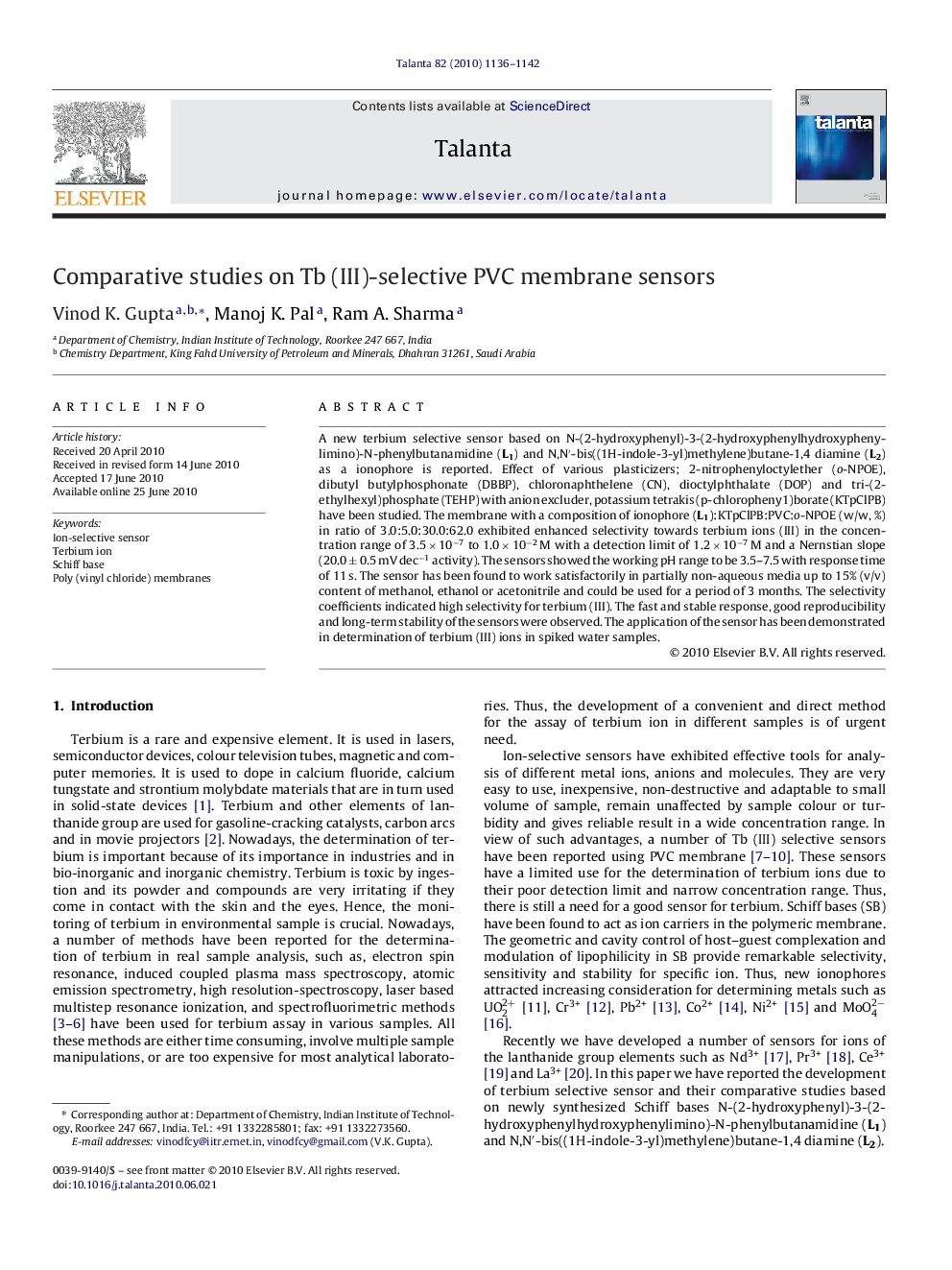| Article ID | Journal | Published Year | Pages | File Type |
|---|---|---|---|---|
| 1244334 | Talanta | 2010 | 7 Pages |
A new terbium selective sensor based on N-(2-hydroxyphenyl)-3-(2-hydroxyphenylhydroxyphenylimino)-N-phenylbutanamidine (L1) and N,N′-bis((1H-indole-3-yl)methylene)butane-1,4 diamine (L2) as a ionophore is reported. Effect of various plasticizers; 2-nitrophenyloctylether (o-NPOE), dibutyl butylphosphonate (DBBP), chloronaphthelene (CN), dioctylphthalate (DOP) and tri-(2-ethylhexyl)phosphate (TEHP) with anion excluder, potassium tetrakis (p-chloropheny1)borate (KTpClPB) have been studied. The membrane with a composition of ionophore (L1):KTpClPB:PVC:o-NPOE (w/w, %) in ratio of 3.0:5.0:30.0:62.0 exhibited enhanced selectivity towards terbium ions (III) in the concentration range of 3.5 × 10−7 to 1.0 × 10−2 M with a detection limit of 1.2 × 10−7 M and a Nernstian slope (20.0 ± 0.5 mV dec−1 activity). The sensors showed the working pH range to be 3.5–7.5 with response time of 11 s. The sensor has been found to work satisfactorily in partially non-aqueous media up to 15% (v/v) content of methanol, ethanol or acetonitrile and could be used for a period of 3 months. The selectivity coefficients indicated high selectivity for terbium (III). The fast and stable response, good reproducibility and long-term stability of the sensors were observed. The application of the sensor has been demonstrated in determination of terbium (III) ions in spiked water samples.
